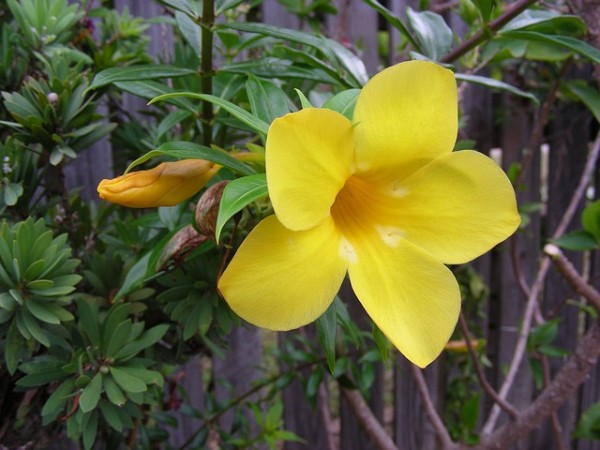

L’Allamanda it includes several climbing plants cultivated for the prolonged and decorative summer flowering. Beautiful in the garden to be grown in pots, close to walls, in flower beds and on terraces in splendid hanging baskets.
General characteristics of Allamanda cathartica
The different species of Allamanda, originating from central and southern America, they belong to the Apocinaceae family. Although the plants are climbers, they can also be grown as hanging plants.
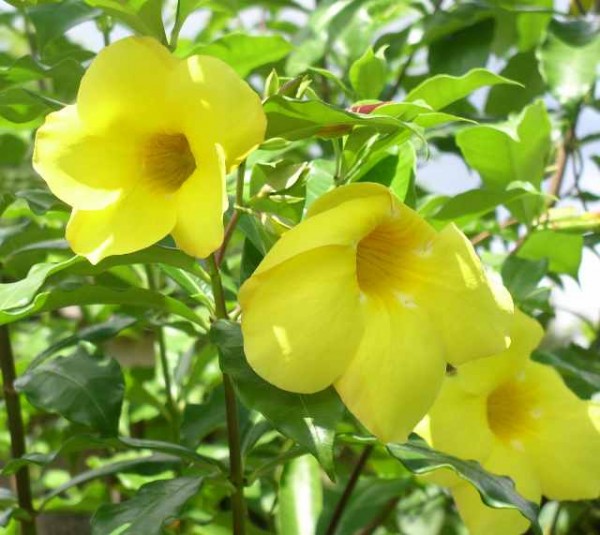
The most cultivated and known is theAllamanda cathartica an evergreen plant composed of thin stems, even more than 150 cm long, densely covered with lanceolate, glossy and dark green leaves, similar to those of the oleander or the sundevilla.
Read also: Poinsettia cultivation

At the apex of the stems large bell-shaped flowers bloom, gathered in racemes, similar to those of the Peruvian Thevetia or Dipladenia Mandevilla or Sundevilla.

The corolla of the flowers of the Allamanda cathartica variety is composed of 5 very showy golden yellow petals. In the other species the flowers are pink or red-purple.
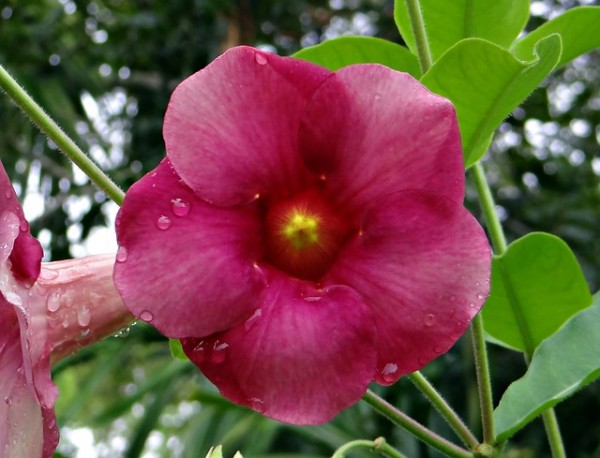
After flowering, on the plant make the appearance of fruits very particular, spiny and hairy capsules with a rounded shape.

You may be interested in: Kalanchoe or Calancola cultivation
THE fruits when ripe they open, releasing numerous seeds.
The winged, small and fertile seeds are scattered by the wind.
Flowering
Allamanda blooms from late spring to late autumn.
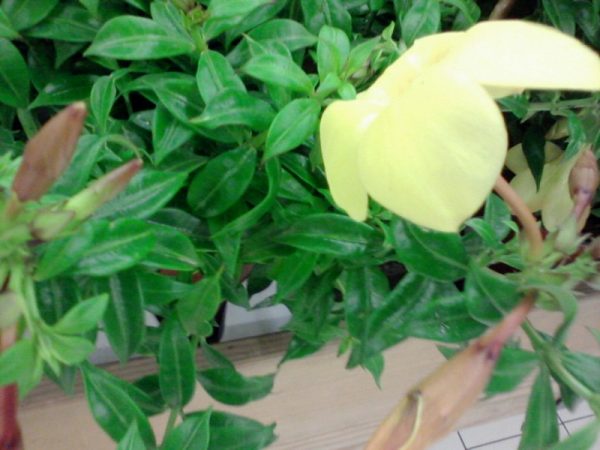
Cultivation of Allamanda cathartica
Exposure
He loves bright places, sheltered from the wind and cold. It does not tolerate the harsh or too humid climate.
Ground
It prefers soft, fertile, slightly acidic and well-drained soil.
Watering
It needs regular and constant watering from the vegetative restart until the end of flowering. During the winter, keep the soil slightly moist and avoid water stagnation.
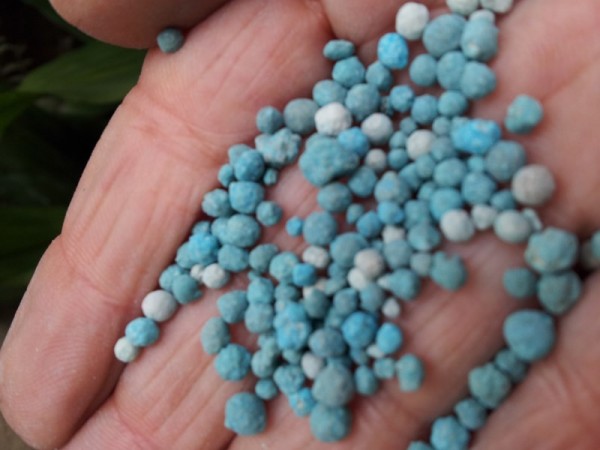
Fertilization
From spring to early autumn, every 20 days, administer specific liquid fertilizers for flowering plants or slow-release granules.
Allamanda: cultivation in pots
In regions with harsh winter climates this beautiful ornamental plant can be grown in pots so that you can shelter it as soon as the temperature starts to drop. A suitable pot should be used to contain the expansion of the root and the aerial part, generally larger than the earthen bread. The soil must be specific, loose, rich in organic substance. To avoid contact of the root with the draining water, a layer of expanded clay or other draining material should be placed on the bottom of the pot. It should be kept outdoors in the summer and sheltered indoors in winter.

Repotting of Allamanda
The plant should be repotted in early spring, gradually using a pot with a diameter of a few cm larger containing new soil. To avoid damage to the roots it is advisable to repot the plant directly with its earthen bread.
The final pot must not exceed 50 cm in diameter. In the latter case, the intervention is limited to the renewal of the surface soil.
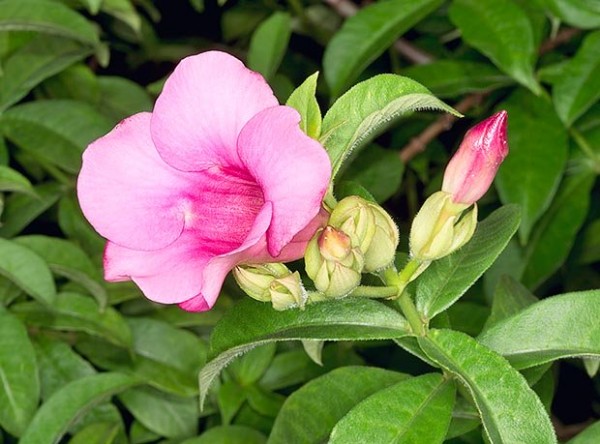
Multiplication of Allamanda
L’Allamanda it multiplies by seed at the end of winter and by cutting, in autumn or spring. The cuttings, about 10 cm long, must be taken from the non-flowering lateral branches with well-sharpened and disinfected shears.
After treating them with a light layer of rooting hormones, they root in a mixture of sand and peat. When new leaves appear, the seedlings must be transferred to small containers before being placed in their final home.
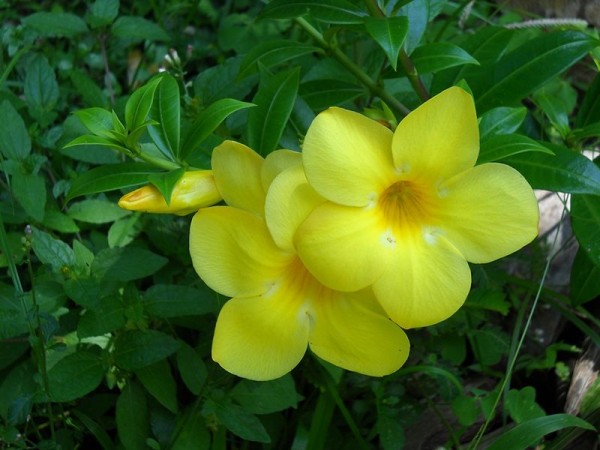
Allamanda pruning
To favor basal stumbling, frequently trim the main branches. In spring, prune very long branches, old and messy ones, leaving only one or two knots of old wood.
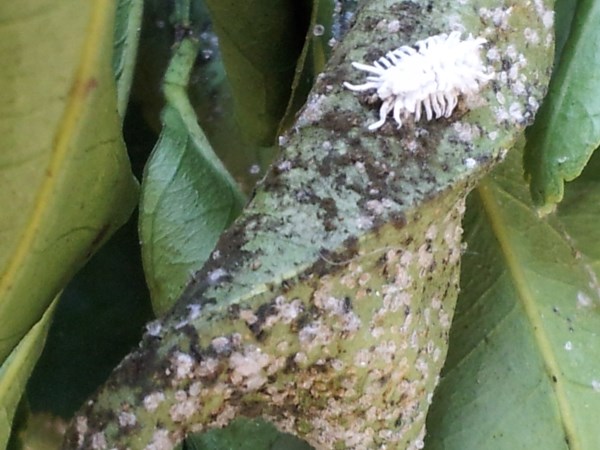
Parasites and diseases of the Allamanda
L’Allamanda it is attacked by the cochineal and the red spider, parasites that are eliminated manually or with specific treatments easily available on the market.
It suffers from root rot caused by water stagnation.
Cures and treatments
The scale insects can be removed manually with a cotton swab dipped in alcohol. The spider mite can be eliminated with specific pesticides or through biological control, perhaps by introducing antagonistic insects into the habitat such as ladybugs, which are greedy for this small mite.
Varieties and species of Allamanda
There are several species all ornamental and suitable for cultivation in pots.
Allamanda blanchetii
Also called Red Bell, it is a climbing species with thin stems about 1.5 meters high and shiny and leathery leaves, oval or lanceolate of bright green color. From spring to autumn it produces showy pink or purple funnel-shaped flowers. It is a species that can also be grown as a houseplant in a bright place away from direct sunlight and drafts. In summer it should be watered regularly and often vaporized with non-calcareous water while in the winter season watering should be considerably reduced.
Allamanda schottii
It is a shrub species native to Brazil. In full vegetative vigor, the shrub exceeds 3 meters in height and about 2 m in width. The leaves have an elliptical-obovate shape and are arranged in spirals of 3–5 along the stems. The flowers are large and yellow and generally appear at the ends of the branches in the spring period. It prefers rich and well-drained soils. It loves a temperate climate and resists short periods of drought. It should be pruned every year.
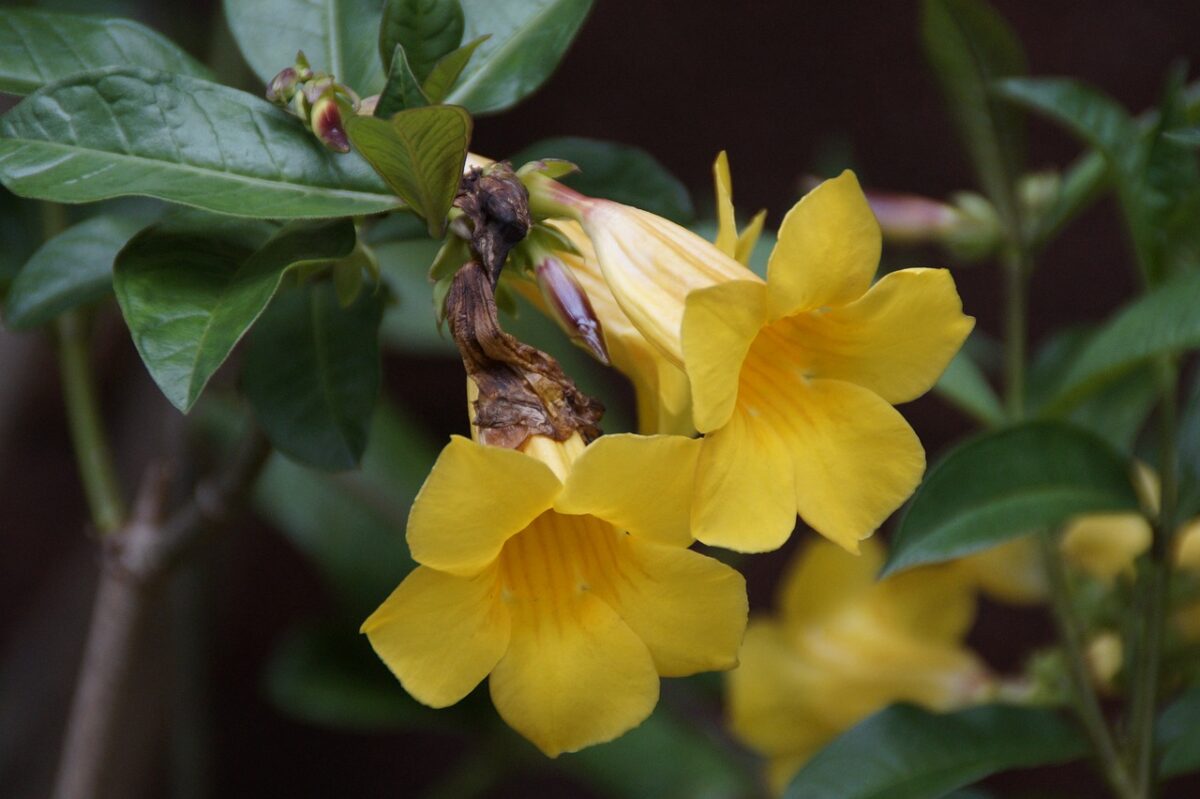
Violet allamanda
It is a climbing shrub species that reaches several meters in height with oval, bright green, slightly wavy leaves. In summer it produces showy flowers with flared petals of a red-purple color. It is a fast growing tropical plant that can be grown in full sun or half shade. It grows well at temperatures between 20 and 25º and does not tolerate those below 10 ° C. It prefers mixed soil consisting of garden soil, leaf litter and silica sand. it should be regularly watered with limestone-free water and fertilize from spring to autumn every 15 days with a mineral fertilizer that favors flowering.
Uses
The different species of Allamanda are grown as ornamental pots and outdoors in coastal gardens to carpet dividing walls and fences.
In the past, some species of Allamanda were used in folk medicine to treat liver tumors, jaundice and malaria.
Is allamanda a poisonous plant?
All species of Allamanda are toxic and you have to be careful of the sap that causes serious skin irritation by simple contact.
Curiosity
The genus Allamanda was honored to the Swiss botanist Frederich Louis Allamand.

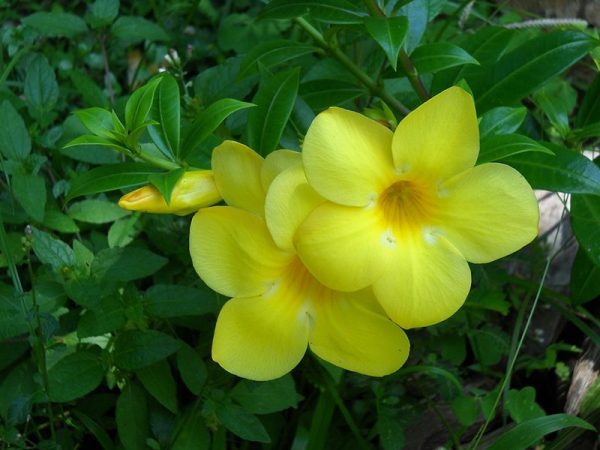

Add comment